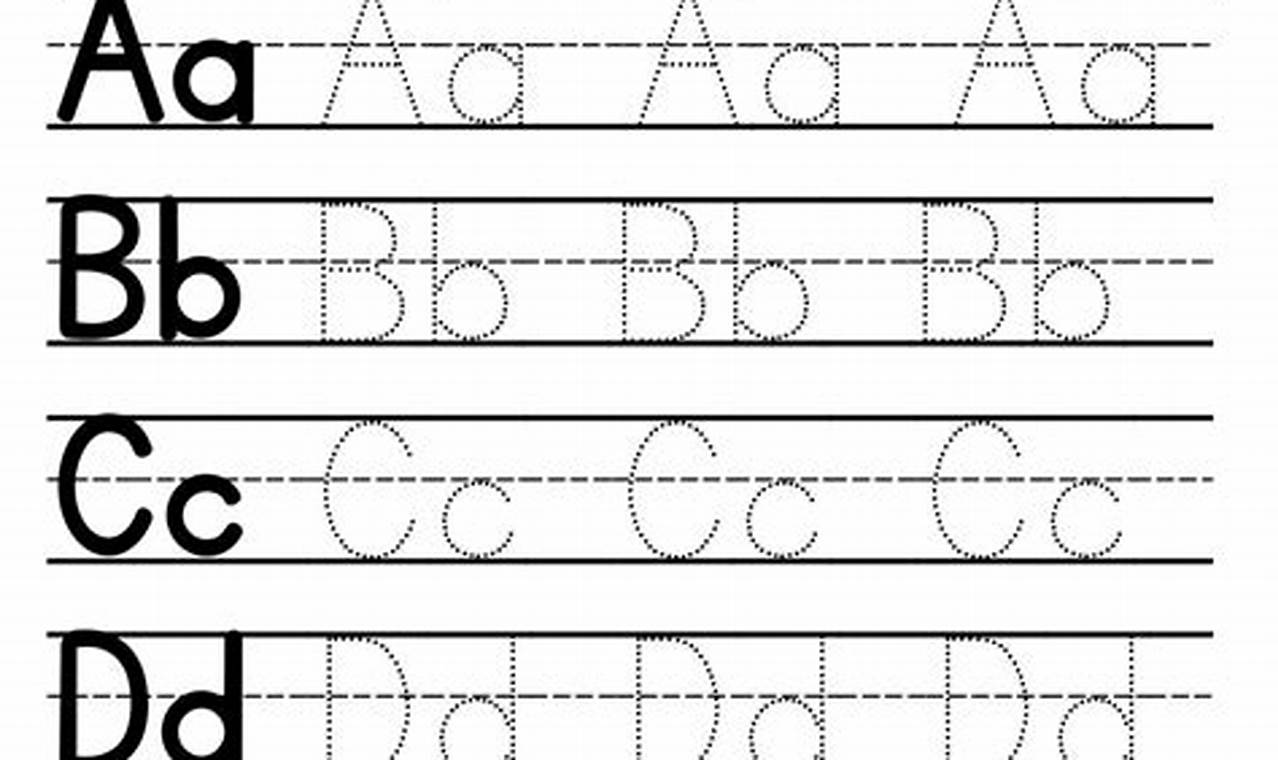Mastering the alphabet is a foundational step in a child’s educational journey. The ability to recognize and form letters correctly paves the way for reading, writing, and overall communication skills. Alphabet tracing, particularly with built-in self-correction mechanisms, significantly contributes to the development of early handwriting and fine motor skills, ensuring a strong start in literacy.
The “alphabet tracing for self-correction” worksheet offers numerous learning benefits. It enhances letter recognition by visually reinforcing the shape of each letter. The act of tracing improves hand-eye coordination and fine motor control, essential for legible handwriting. Furthermore, the self-correction element promotes independent learning and problem-solving skills, as children learn to identify and correct their own mistakes.
This worksheet contains a complete set of alphabet letters, presented in a clear and traceable format. Each letter is designed with a starting point indicator, guiding the child through the correct stroke order. A faded version of the letter is included next to the tracing lines, serving as a visual reference for self-correction. Ample space is provided for independent practice after the guided tracing, allowing children to reinforce what they have learned.
To use the worksheet effectively, begin by introducing one letter at a time. Start with the uppercase version, followed by the lowercase. Encourage the child to trace each letter slowly and carefully, focusing on staying within the lines. After tracing, prompt the child to compare their work with the faded letter provided for self-correction. If errors are identified, gently guide them to try again. Using a thick pencil or crayon can help provide better grip and control for younger learners. Break the task into shorter sessions to maintain focus and prevent frustration.
To further enhance learning, consider supplementing the worksheet with related resources. Kidtraces.com offers a variety of free alphabet-related worksheets, including letter matching and handwriting practice sheets. Interactive educational games that focus on letter recognition can also be beneficial. Reading alphabet books together and engaging in daily activities that involve writing, such as drawing or journaling, can further reinforce alphabet skills.
The “alphabet tracing for self-correction” worksheet provides a valuable tool for developing essential handwriting and literacy skills. Its structure encourages independent learning, while its self-correction feature fosters critical thinking. Download this worksheet today and witness the positive impact it has on a child’s alphabet mastery. Explore more free educational resources at Kidtraces.com to support continuous learning and skill development.
